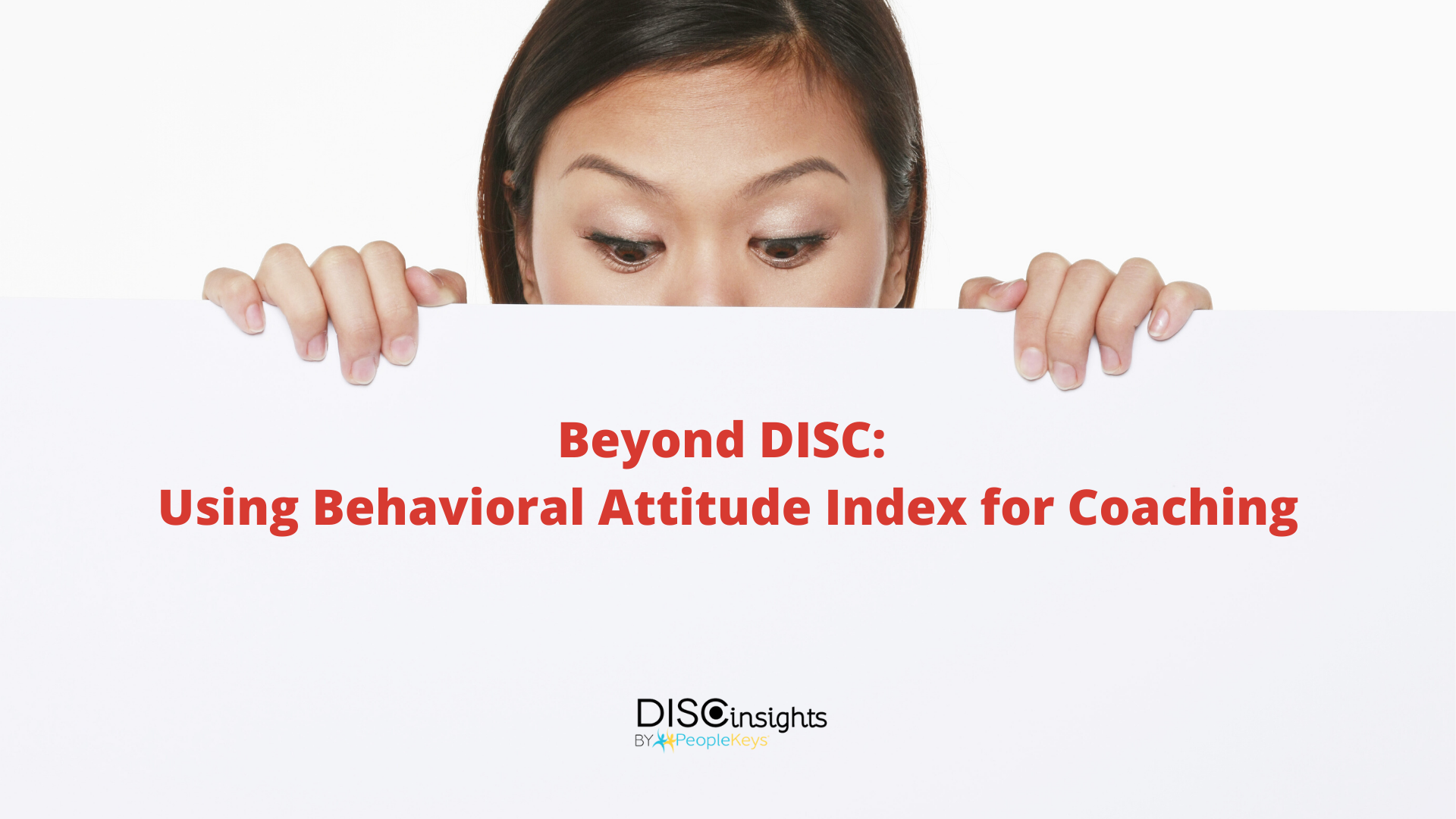- SHOP BY PRODUCT
- DISC TRAINING & CERTIFICATION TOOLS
- DISC RESOURCES
- BLOG
- SHOP BY PRODUCT
- DISC TRAINING & CERTIFICATION TOOLS
- DISC RESOURCES
- BLOG
- ALL ITEMS



The DISC personality model is a great place to start when offering leadership coaching, but it doesn’t paint a complete picture of what someone brings to your organization. The four personality styles are useful when understanding interactions between people and provide the “framework” for helpful coaching plans. You can take it to the next level of leadership success by including PeopleKeys’ proprietary Behavioral Attitudes Index (BAI) report. The BAI assesses six different desires that motivate us internally. When our actions and tasks match our BAI styles, our attitudes are seen as positive and vice-versa.
 Let’s see how this different dimension interacts with the DISC styles to provide a more detailed profile for leadership coaching:
Let’s see how this different dimension interacts with the DISC styles to provide a more detailed profile for leadership coaching:
This is a desire for harmony, self-growth, and balance. People with this primary BAI style want to pursue their passion and purpose. For the “Dominant” personality, while peace may be the goal, they may become frustrated with themselves for not getting to that point quickly. The “Influencer” personality may talk about their spiritual pursuits with others, which could either inspire them or bore them if the “I” style makes it all about themselves. A “Steady” leader already seeks harmony, so their coaching might center on how to get comfortable with confrontation. The “Compliant” style can use this motivation to ease up on their analytical side and appreciate others who may not have the details they like.
This BAI style is the desire for helping and serving others. If the “D” style is driven by this, they may need to be coached about their intensity of approach. The “I” style gets caught up in this motivator since it’s people-centric, but their impulsiveness can lead them to bite off more than they can chew. An “S” style can use coaching on how to not go too far when putting the needs of others over their own. As someone who focuses on details, the “C” style’s desire to help can be overshadowed by focusing on too many details.
This is the desire to be in charge or have influence. When a “D” style has this motivation, the leadership coaching opportunity is about not taking their intensity too far in their quest for power. An “I” style may be coached on handling rejection, as they seek to influence others. The “S” style may want to lead, but their dislike of confrontation may hold them back. A “C” style may become overly critical of others as they try to demonstrate power over them through excessive detail.
We all want to make a living, but this BAI style has a strong desire for financial security. This can lead the “D” style to step on others while reaching for a better financial status. The “I” style with this motivator can be coached around setting small, achievable financial goals. An “S” style may benefit from coaching about increased flexibility, since opportunities often involve something new. And the “C” style will need reminders to stop counting their loot and focus on others occasionally.
With this BAI style, people have a strong desire to express themselves as individuals. The “D” style may need to be coached about imposing themselves and their beliefs on others. An “I” style can take this desire overboard, boring team mates and losing their leadership edge. The “S” style may actually need encouragement to share their gifts with others. Some “C” style coaching can center on helping them read their audience, since their expression may be too detailed for some personalities.
Simply put, this is the desire to learn. As the “D” styles seek to understand, their impatience can be the focus of their leadership coaching. The “I” style fears rejection, so getting past that is the first step for gaining understanding about something. An “S” style can use some nudging on how to stay focused on their own knowledge quest and not put their desires aside for others. Finally, the “C” style’s highly analytical approach can lead them down a rabbit hole, taking away from their leadership effectiveness.
As you can see, the combination of DISC style with the BAI styles creates dozens of profiles that are more helpful in understanding your coaching clients. Most DISC assessments end there, but I’ve benefited from the comprehensive 4D Report: DISC + TEAMS + Values + BAI. From the standpoint of leadership coaching, the rich information from this report provides numerous dimensions for examination.

© PeopleKeys. All Rights Reserved
WORKING DAYS/HOURS
Mon - Fri / 8:30AM - 5:00PM EST
